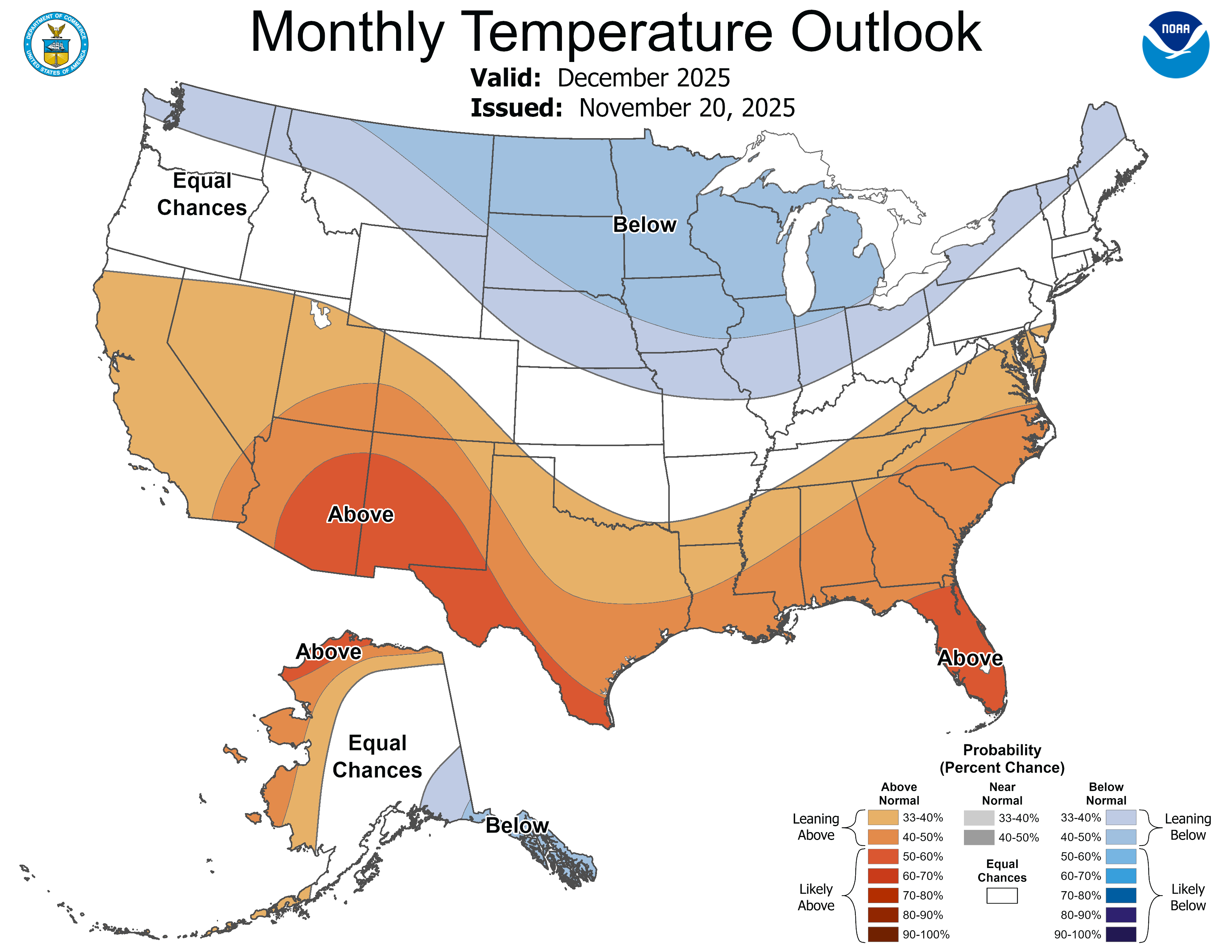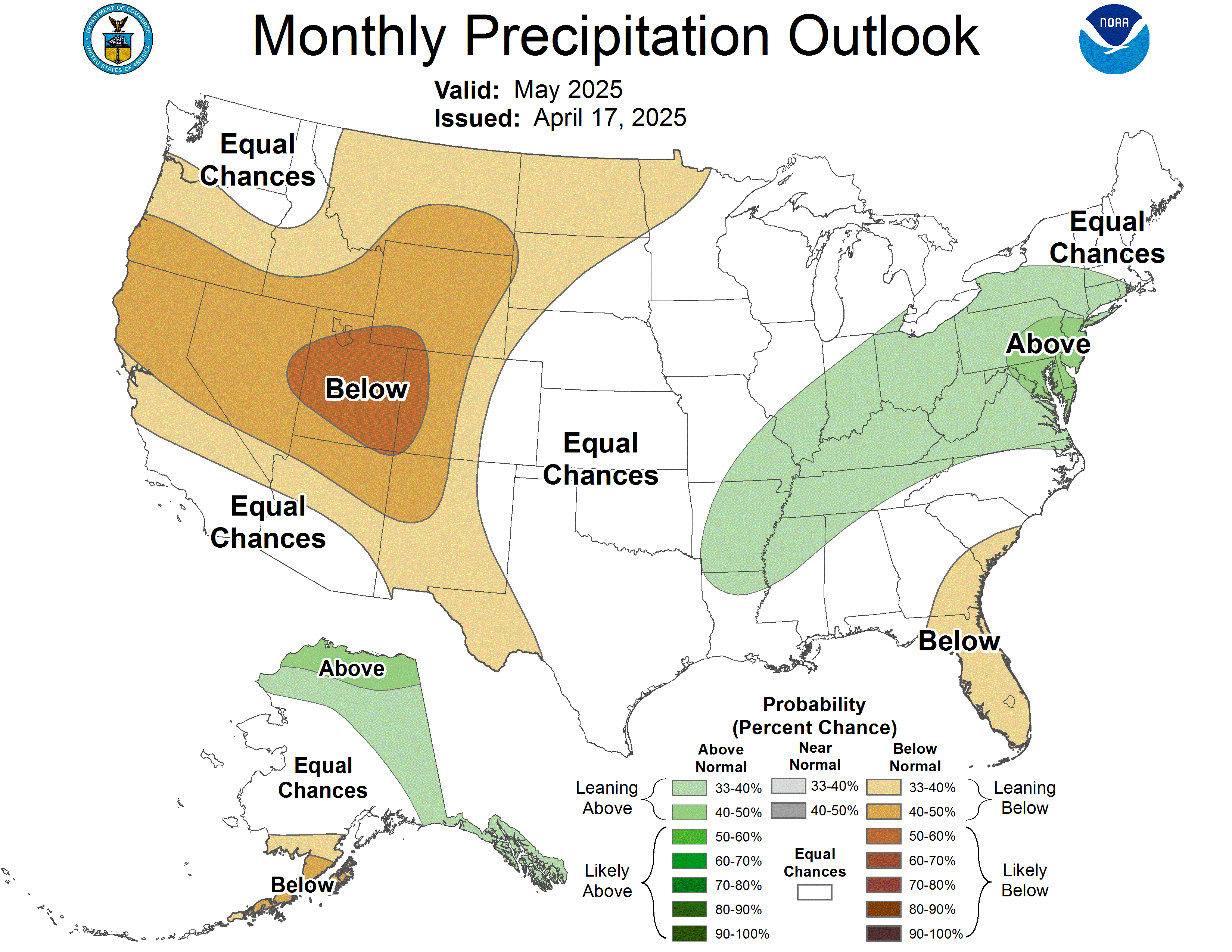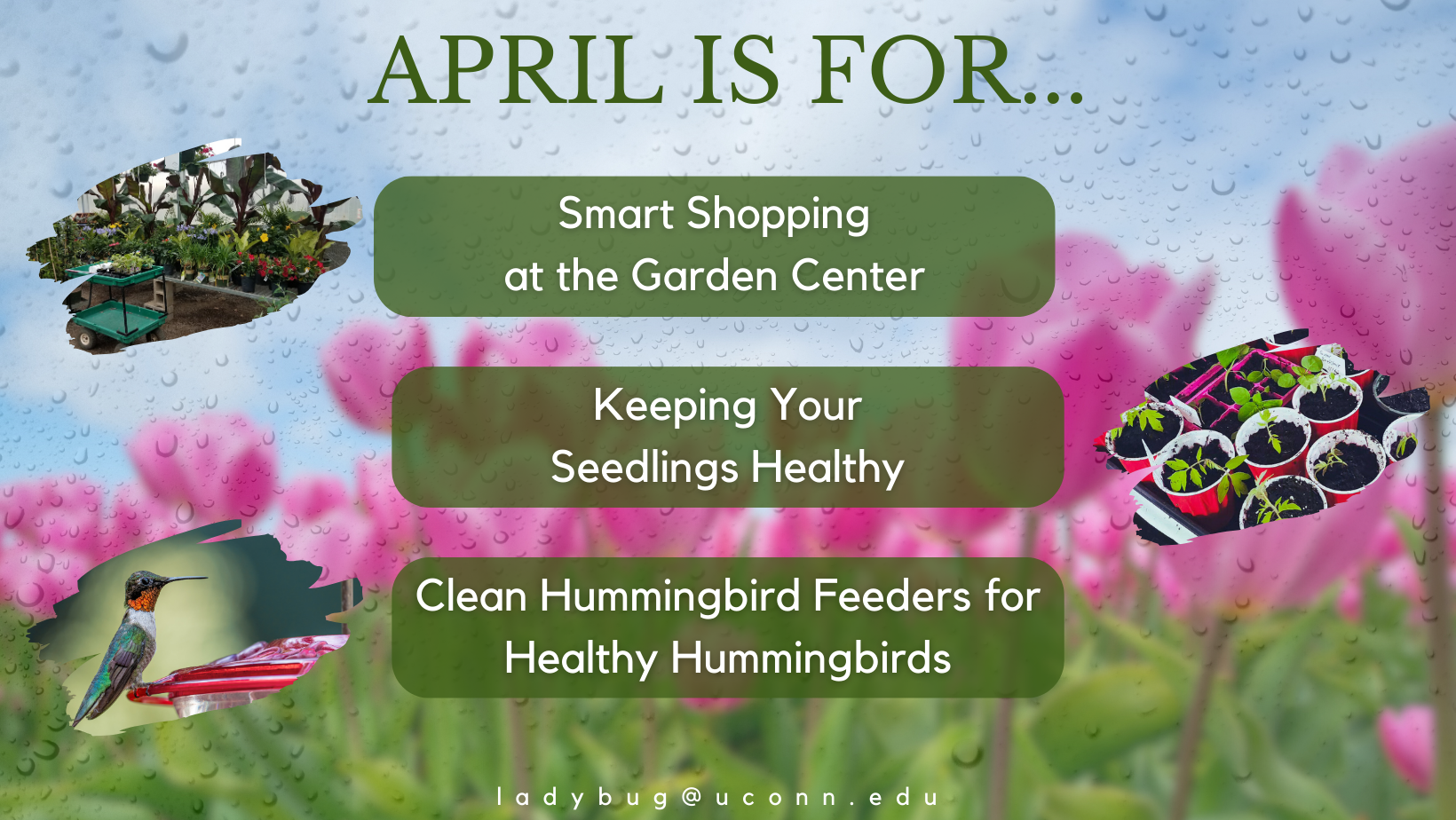
"Money can't buy happiness, but it can buy plants, and that's the same thing."
- Unknown
Smart Shopping At The Garden Center!
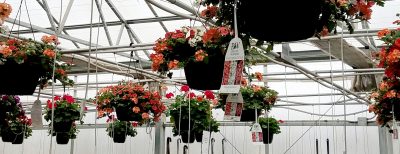
This time of year is when the trucks start filling the garden centers with fresh plant material and new varieties! Growers who have been growing their new stock will start to
release their products both in retail and wholesale spaces. We're starting to look closer at what's coming for the new season and dreaming on gardens to come! Here's a few smart shopping tips for going into the garden center this spring!
- New Varieties are "released" into the grower markets before they hit the retail market. It may still take a couple seasons to make it to your patio! When looking at new material, grower catalogs display what they plan on providing to their customers (garden centers) and therefore are more reliable.
- Many garden centers order their plants in the fall of the previous year, so availability, especially for new varieties, can be very tight!
- New introductions usually have been through years of display gardens, trials and other testing conditions to make sure that they will perform well in our zone and climate.
- Not every garden center will carry every variety available. Many will choose to focus on a select few they've selected for their client base.
- When substitutions are necessary, select a substitute that will meet your target size, growing conditions and maintenance expectations. Avoid decisions based on physical features alone.
- Some perennials and flowering shrubs may have been forced to flower early in order to sell this spring. These plants will correct themselves to their "normal" schedule once they complete a season in the ground.
- Planting your garden in "stages" will help you extend your budget, but it will also give you a chance to see how plants grow into the area.
- When considering plant size, ask yourself the following questions:
- Can I handle digging and planting this by myself?
- How quickly do these plants grow in one season?
- Am I willing to wait multiple weeks/months/seasons for it to grow in, or do I want instant gratification?
Keeping Your Seedlings Healthy
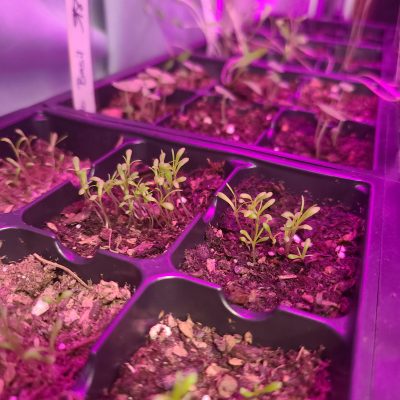
In February, March, or even April we're starting seeds. Gardeners spend a lot of time and energy in picking out the right lights, creating the ideal conditions, and helping those seedlings get the right start. We're here to tell you keep up the enthusiasm! Here are few tips to keep your seedlings in good shape until you're ready to plant.
- Maintain a consistent moisture across all cells.
- Don't be afraid to thin or transplant seedlings into slightly larger cups or containers once true leaves are showing.
- Maintain light! The height of your grow lights may need to be adjusted after germination to keep seedlings reaching for sunlight.
- Air circulation is crucial! Consider using a fan on a low setting to keep air moving and to help strengthen young stems.
Clean Hummingbird Feeders for Healthy Hummingbirds
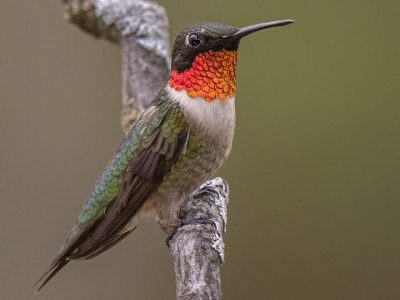
Each spring, ruby-throated hummingbirds embark on their annual migration north to Connecticut from Mexico. These migratory journeys, which can span hundreds or thousands of miles, require immense preparation and a shocking amount of energy from these small birds - the smallest in the world. Their spring migration north is a solitary journey with the goal of getting to their breeding grounds early enough to claim the best feeding territories. They will be very hungry and in need of nourishment when they arrive. Putting out feeders in anticipation of their arrival- early April- will help with their transition until the flowers are in bloom. Proper care of the feeders will ensure these little birds stay happy and healthy during their stay until they begin their migration south in the fall.
Native Plant Highlight: Red Trillium

Also known as red wakerobin, Trillium erectum is a native plant that blooms in late April. The rather putrid-smelling flowers are pollinated by flies. Found in open deciduous woodlands, it is often found among bloodroot, ramps and violets. Flowers vary in color, sometimes being green, white or pale red. Moths may also visit the flowers.
Be On the Lookout: Mourning Cloak Butterfly
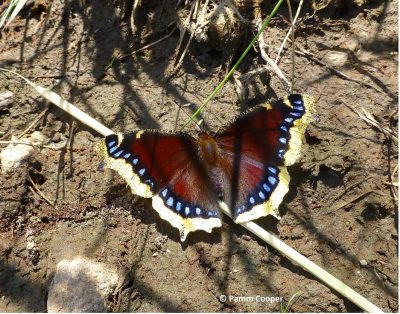
Mourning cloak (Nymphalis antiopa) is a large brush foot butterfly that overwinters in its mature form. It is one of the first butterflies seen in late winter- early spring and are sometimes seen flying on warm winter days. Seldom visitors to flowers, these butterflies lap tree sap, dung, mud and ripe fruit. Caterpillars are found mostly on willows and elms living in communal groups in silken shelters. Look for them when willows begin leafing out. These butterflies may be the longest living ones in North America.
The CT Native Tree & Shrub List Has Been Updated for 2024!
UConn Extension and CT DEEP Wildlife Division have released an updated list of CT native plant selections and businesses that grow and/or sell these plants! We shared the 2023 list last month. See below for the updated list for 2024. One of the biggest updates is that the list now also includes native perennials!
2024 Connecticut Native Perennial, Tree & Shrub Availability List
Blueberry Growers: Prevent Mummy Berry This Spring
UConn Extension's Fruit Expert, Evan Lentz, has advice for people that had blueberry mummy berry problems last year: " I’ve seen Forsythia beginning to bloom already. This means that we need to make sure to get down a 2-4” layer of mulch on our blueberries if you haven’t done so already. Forsythia bloom times coincide with the maturity of the overwintering spores that are currently on the ground under your bushes. We are a bit away from having the conditions required for infection (50-62°F) which makes this the perfect time to apply that mulch."
Knowledge to Grow On

Read our Ladybug blogs written weekly:
Upcoming Events and Things to Do

- Connecticut Audubon Walks- there are many walks scheduled around Connecticut for the month of April. The website also has Audubon centers and Ct. sanctuary sites. Late April is also the start of the spring bird census.
- Sky's the Limit Hiking Challenge - Hosted by CT Parks & CT DEEP. March 22, 2024 - December 6, 2024
- City of Hartford Earth Day Celebration, April 22
- Pick your own Daffodils or Tulips!
- Halfinger Farms- pick your own daffodils at this historic 1790 property on Candlewood Hill Road in Higganum. They recommend calling first for picking status- 860-345-4609.
- Wicked Tulips, Multiple locations. Check out their bloom reports for details of each location.
- Total Solar Eclipse - April 8th, 2024 - View details about where, when, and how much coverage we will see!
- Colorblends Spring Bulb Garden display - Bridgeport, CT. April 1- May 12. Features spring bulbs like snowdrops, crocus, daffodils, tulips, alliums and others that bloom in sequence. Located in Bridgeport.
- Visit Historic Homes and Gardens in Connecticut- Visit gardens and homes like the Henry Whitfield Museum in Guilford, Leffingwell House and Norwich, the Florence Griswold Museum in Old Lyme and the Rosewood Cottage in Woodstock, among many others.
- CT Cactus & Succulent Society Annual Show & Sale April 13th & 14th - Bristol, CT
- CT Orchid Society - Orchid Show & Sale 'Spring into Orchids' April 20th, Bristol, CT
Educational Opportunities & Workshops
- Ecological Approaches to Garden Design and Management with Harland Patch, April 18 2024 - Live and on Zoom
- Explore Connecticut's Notable Trees, April 6th, Derby CT
- Organic Farming & Gardening presented by the Naugatuck Garden Club, April 18th
- Gardening in America - Self Paced Online Course from the American Horticultural Society
April Gardening Tips
1. Apply pre-emergent crabgrass weed control when soil temperatures reach 50°F. Use a tool like this soil temperature map to track your timing. Do not use a pre-emergent weed control if you are trying to germinate grass seed.
2. Place peony supports.
3. Freezing temperatures don’t harm pansies, but if they have been grown in a greenhouse they should be gradually exposed to outdoor temperatures before planting. Frosts and freezing temperatures can damage delicate flowers.
4. A new generation of spongy moth and eastern tent caterpillars will hatch in late April and begin feeding on the leaves of many tree species. Remove and destroy any egg masses you find on your trees.
5. Cut ornamental grasses back to a height of 6 inches before new growth appears.
6. Set up a bat house early in the month to encourage them to roost. Visit the DEEP’s Bats fact sheet for information and bat house plans.
7. When filling large containers for the deck or patio, use less soil by creating a false bottom. Most smaller container plants don't need more than about a foot of soil depth for their roots. Keep the plant in a smaller pot that is supported by an inverted pot or rocks.
8. Start dahlia tubers in pots indoors in a cool, bright spot. Cover tuberous roots with 2 to 3 inches of potting mix. Pinch back tips when they reach 6 inches and transplant outdoors when the ground temperature reaches 60° F.
9. Inspect houseplants for pests and use low-toxicity insecticidal controls as needed. Transplant houseplants that need repotting.
10. Place seedlings in cold frames around April 25 or later to harden off.
Did You Know...
This year, a company called Light Bio received approval to produce and sell glow in the dark petunias! Scientists were able to genetically engineer a petunia with the genes of a bioluminescent mushroom to create this fascinating plant!
Flowers are white in daylight, and in the dark the fastest growing parts of the plants will give off a soft glow.

Photo by Light Bio
This Month’s Newsletter Contributors:
Pamm Cooper, Dr. Nick Goltz, Dawn Pettinelli, Marie Woodward, Heather Zidack
